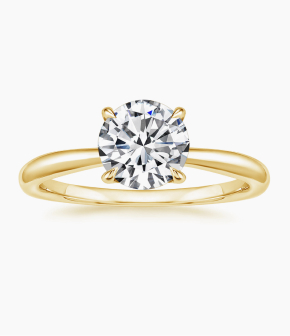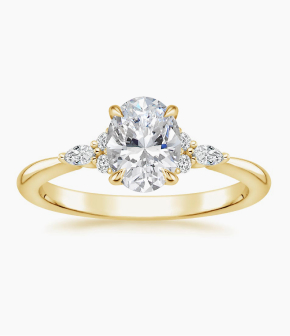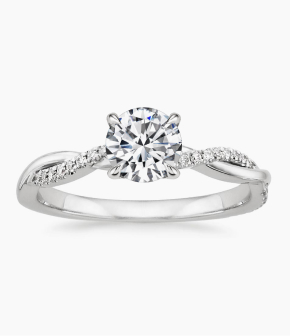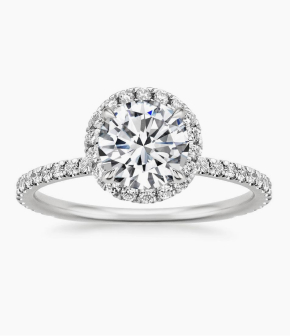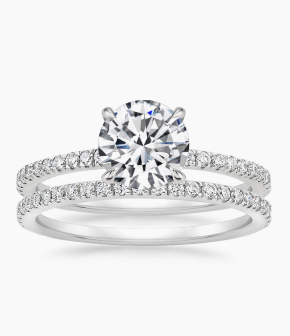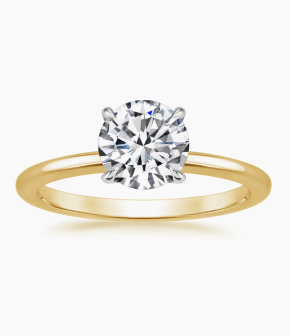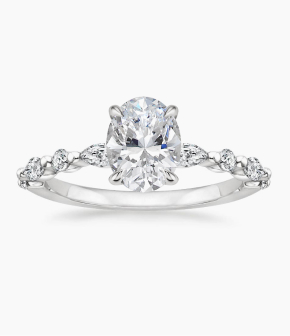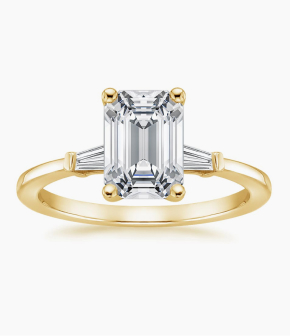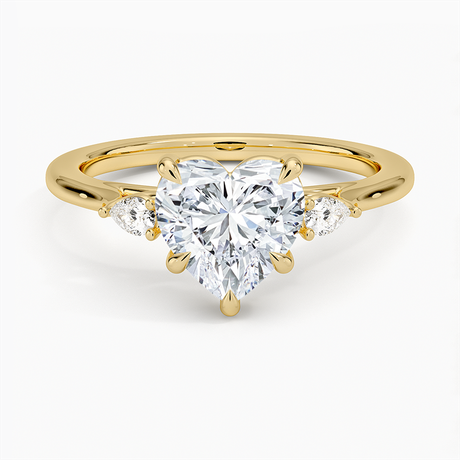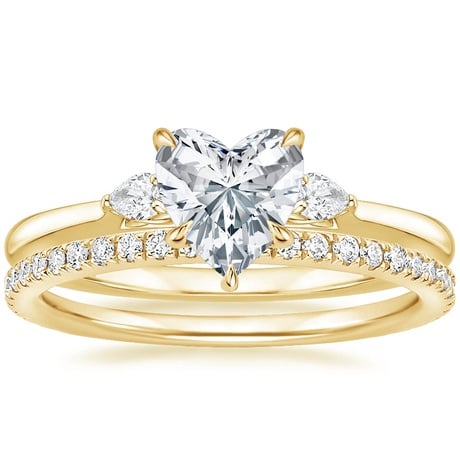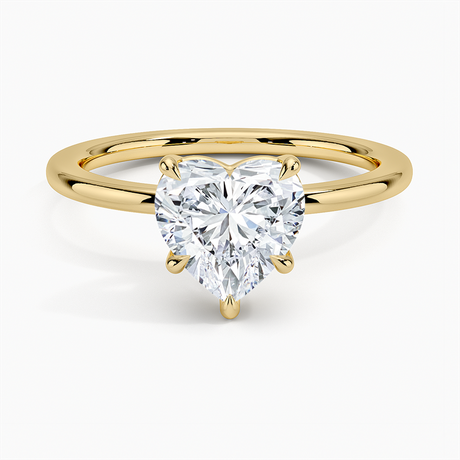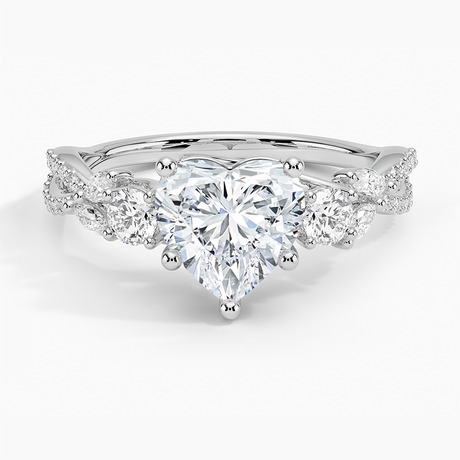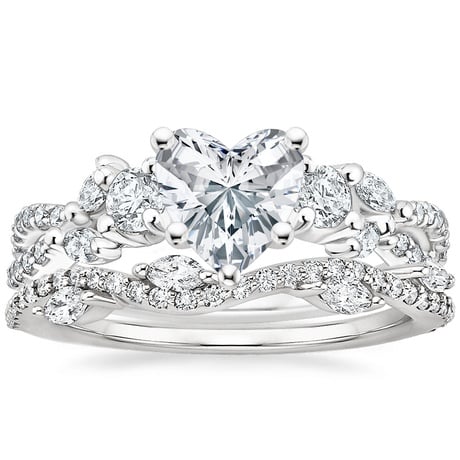A heart diamond ring is a classic yet romantic choice to celebrate an engagement. Instead of the geometric shapes typically associated with diamonds used in engagement ring styles, heart diamonds go beyond beauty and bridge into the symbolic. Hearts represent love, romance, and passion. Heart diamonds come in wide-ranging grades of cut, color, and clarity (alongside carat these categories comprise the famous 4 Cs), allowing for variation and a lot of options.
Once you've selected the right stone, the perfect heart shaped diamond ring must have a carefully selected setting. Pavé bands with diamonds that wrap half of the way around the band are the most popular choice for heart diamond rings, but the options are limitless – choose an engagement ring setting that fits you and your partner's style and reflects the uniqueness of your love story.













